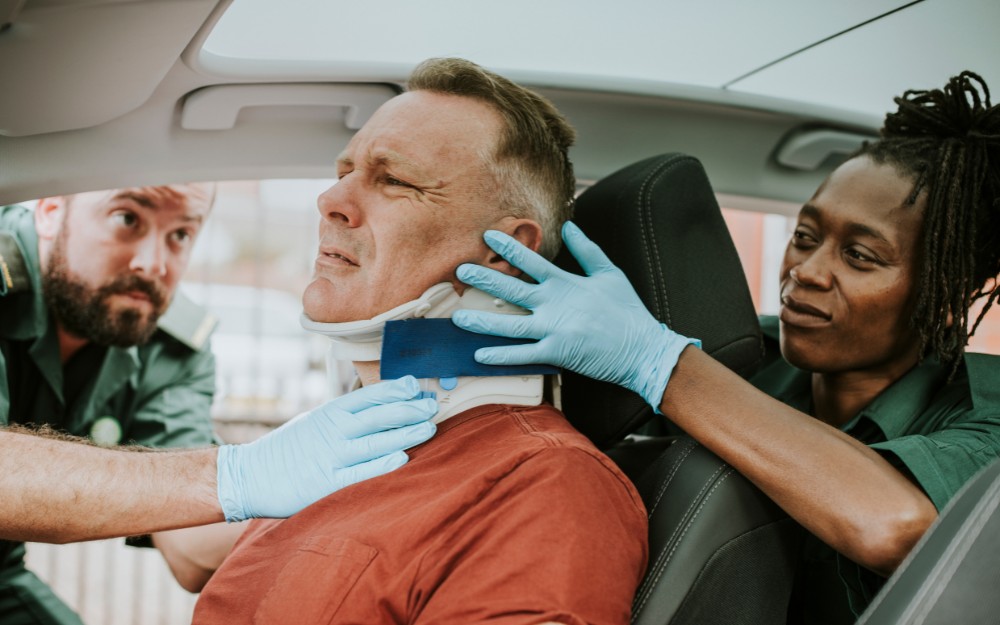While deaths from motor accidents have decreased significantly in the last decade, injuries have continued to increase. A 2018 report from the Bureau of Infrastructure, Transport and Regional Economics (BITRE), Road Trauma Australia, found there were 38,945 hospitalised injuries in 2016, a nominal increase of 3.6 per cent per year since 2013.
Because of the frequency of injuries from motor vehicle accidents – whether you’re driver, passenger, pedestrian or cyclist – Australia’s states have Compulsory Third Party (CTP) insurance schemes which provide compensation for those injured in such accidents. The insurance premium is paid when the car is registered in the state.
This is also the case in South Australia (SA) where the Compulsory Third Party Insurance scheme is managed by the CTP Insurance Regulator, which instructs one of four insurance companies – AAMI, Allianz, QBE and SGIC – to manage claims for compensation due to personal injury. Since July 1, 2019, South Australians are able to choose their CTP insurance from the four Government-approved insurers mentioned above when they renew their registration.
There were also some significant changes to CTP insurance in SA after July 2013 which anyone who has been injured in an accident involving a motor vehicle needs to be aware of before making a claim for compensation.
What to do after your accident
If the accident is minor and all cars involved are still driveable, no one has been injured and the vehicle damage is estimated at less than $3,000, there is no legal obligation to report the accident to police. That said the drivers of every vehicle involved in the accident must stop at the scene and exchange details, such as their names and addresses, the names and addresses of the owner of the vehicles if they differ from the driver’s, the registration number of the vehicles or any other information that could be used to identify the vehicles involved. Failure by either party to exchange details means the accident must be reported to police for further investigation.
Even where there is no legal obligation to report an accident to police, because injuries from motor vehicle accidents can often manifest at a later time, it’s always recommended you report the accident to police and seek medical attention as soon as possible. It is important to be specific to police about what occurred and what injuries you may have suffered. A CTP insurer will always source the police report and medical records when they come to assess a property or personal injury claim so for consistency your injuries noted in the police report may be compared to the injuries you want to claim.
If the accident has resulted in an injury or death, then the police and the CTP insurer should be advised of the claim.
If you are a passenger involved in a single or multiple vehicle accident, you can still make a claim for compensation even if the driver of the vehicle you were in is at fault. If the driver at fault is unregistered or unknown, then the claim can instead be made under the Nominal Defendant Scheme.
What do you need to know about applying for compensation in SA
The main changes after July 2013 relate to the threshold an injured person needs to satisfy in order to claim compensation for pain and suffering and loss of enjoyment of life, as well as future economic loss and past services provided to them by family members, such as cleaning and cooking or helping them shower or dress.
There are no thresholds to claims for past economic loss, the cost of future paid care, or the cost of medical treatment, rehabilitation, domestic assistance and travel costs. It should be noted, though, that you cannot claim the first seven days of economic loss after an accident (lost wages from being unable to work, for example) and any claim you make for past economic loss will be discounted by 20%.
Assessment of your injuries is made once they have reached “maximum medical improvement” (MMI). This means when your injuries have reached a point where they are unlikely to improve or decline substantially in the foreseeable future. Once you reach MMI, you can undergo an examination with an accredited specialist who will determine what category of injury you have suffered. For example, the specialist may say you have suffered a severe ankle injury or a minor wrist injury. These categories correspond with a range of numbers known as the ‘Injury Scale Value’ (ISV) range. The objective of the Court and your personal injury lawyers Adelaide is to determine where within those range of numbers your injury falls.
You must have an ISV of at least 11 to be entitled to any amount of compensation for non-economic loss (such as pain and suffering, or loss of enjoyment of life).
For future economic loss – the loss of your ability to continue to earn a living due to your injury – the ISV for your injury must be more than 7. There are some limited exceptions to that measure.
There are further thresholds for claiming the cost of past gratuitous personal care and domestic assistance provided by a partner or other family member. You need an ISV of at least 11 and to have been provided these voluntary services for at least six hours a week for at least six consecutive months. Most importantly the services must be reasonably required by the injured person and necessary, in that if they were not provided the injured person would have to have paid someone to do them.
This can be a complex process requiring in-depth medical reports and lots of other evidence on the impacts of the accident. For this reason, consulting a legal professional with experience in the area of motor vehicle accident compensation as soon as possible after your motor vehicle accident is recommended.
For catastrophic injuries such as brain injury, paraplegia, quadriplegia, amputations, severe burns and blindness, SA’s Lifetime Support Scheme (LSS) is a regulated no-fault scheme that provides funding for treatment, care and support, even if you are at fault for a single vehicle accident.
What are the next steps?
You need to lodge a claim with the CTP Regulator within six months of the accident.
When the identity of the other vehicle is unknown then you must take reasonable steps to ascertain their identity, which may involve placing ads in local newspapers seeking witnesses.
Dealing with a CTP insurer can be a daunting process. It is in the insurer’s interest to minimise the amount of damages paid out which is why it makes sense to let an experienced compensation lawyer guide you through the process and ensure any settlement of your claim with an insurer is fair and reasonable. Remember that a settlement is a once and for all payment, and covers not only compensation for past losses, but also your entitlement to future losses.
Gajic Lawyers are specialists in motor vehicle accident injury claims with a proven track record. We have years of experience negotiating with CTP insurers on behalf of our clients, and will take steps to try and finalise your claim as quickly as possible. Get in touch with our South Australia office on 0298905885 today for an obligation-free consultation about your case.








